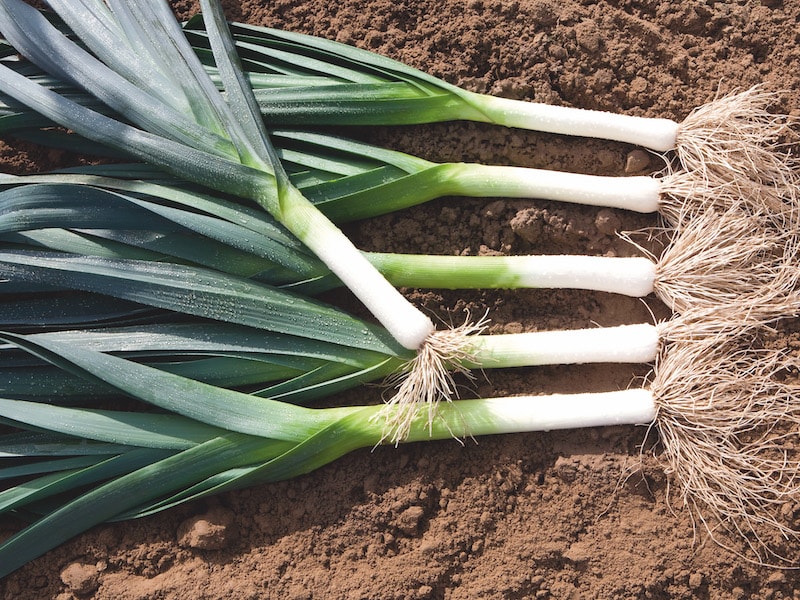Leeks are a tasty and versatile vegetable that can add flavor to soups, stews, stir-fries, and more. However, like many vegetables, fresh leeks may contain small insects or eggs that are easy to miss. To ensure your leeks are bug-free before cooking, proper checking is essential.
When buying leeks inspect them visually first. Avoid leeks with damage sliminess, or spots. At home, take the time to thoroughly wash each layer to remove any lingering pests. With the right technique, getting rid of bugs in leeks is straightforward.
Why Check for Bugs?
Washing vegetables helps remove dirt and residue, but checking goes a step further to look for bugs. Even produce that appears clean may hide insects and eggs in tiny crevices. Consuming these unwanted protein sources can be unappetizing and potentially hazardous.
Common leek pests are thrips, aphids, and leek moths Thrips are tiny elongated insects under 2mm long Aphids are pear-shaped bugs under 3mm. Eggs and larvae can be even harder to see without close inspection.
Proper checking removes insects from leeks improving flavor and texture. It protects you from accidentally eating bugs providing peace of mind with each crunchy bite.
Step-by-Step Guide to Checking Leeks
Checking leeks thoroughly takes attention to detail but is easy to accomplish in 5 key steps:
1. Cut Off the Green Leaves
The first step is removing the green leafy part of the leek stalks. The green leaves trap dirt but do not get clean enough for eating. Cut them off where the green starts fading to white and discard.
2. Trim the Bottom
Next, cut off about 1/4 inch from the root end. This removes any gritty residue. For pre-cut leeks, inspect the bottoms for dirt and trim as needed.
3. Split the Leek Lengthwise
Now comes the bug-checking part. Hold the leek firmly and make a vertical cut down its entire length to split it in half. This exposes all the crevices where pests may lurk.
4. Separate the Layers
Carefully separate the leek layers with your fingers. Break them into individual pieces from end to end so they are ready to wash.
5. Rinse Every Surface Under Water
Finally, hold each leek layer under running water. Scrub both sides by rubbing with your fingers. Ensure water penetrates every crack and crevice. Repeat for every piece – no spot should be left unrinsed.
Tips for Effective Leek Cleaning
Follow these tips for the most thorough leek cleaning:
- Work over a colander or mesh strainer to let water and debris fall away easily.
- Adjust water pressure to dislodge bugs – a strong stream works best.
- Soak leeks in cold water briefly first to loosen dirt.
- Use a soft brush to scrub if needed.
- Check a few pieces at a time to maintain control and focus.
- Visually inspect the cleaned leeks and rerun any questionable pieces.
- Pat dry with paper towels or spin in a salad spinner before cooking.
Take your time, especially on the first few leeks, to develop an efficient washing rhythm. Proper leek cleaning removes up to 90% of potential insect contaminants for safer eating.
Storing Cleaned Leeks
Fresh leeks last 5-7 days when stored properly after cleaning. Here are some storage tips:
- Refrigerate leeks in a perforated plastic bag to retain moisture but allow air circulation.
- Wrap cleaned leek pieces in a dry paper towel before bagging to absorb excess moisture.
- Consider blanching and freezing cleaned leeks in airtight containers for longer-term storage.
With cleaned leeks on hand, you can enjoy their versatility in many dishes any night of the week. Just remember to give them a thorough wash first! Properly checking leeks takes a bit of work but gives you bug-free confidence with every bite.
How To Find Wild Leeks
FAQ
How to check leak for bugs?
How to check Cabbage for bugs?
How to check leek star k?
How do you check dill for bugs?
How do you know if a lettuce leaf has insects?
Check each leaf on both sides under direct light. If one or two insects are found, rewash the herbs. Detach loose leaves; discard; core lettuce; split head in half; peel 4 layers off the head; carefully check these leaves by holding the leaf under direct light; check both sides of each leaf. If 1-2 insects are found, check an additional layer.
How do I know if my Lettuce is infested?
Often, insects may be found between the innermost layers of leaves of an infested head. Therefore, each leaf must be washed and checked individually. The use of a light box for checking lettuce is extremely helpful. Please note: Many of these varieties feature curly leaves with many folds in which the insects tend to hide.
How can you tell if a Lightbox has insects?
To check for insects in a lightbox or paper, examine the surface for any presence of insects. If insects are found, the product should not be used. If no insects are detected, it may be used.
How do I Check my Lettuce?
The use of a light box for checking lettuce is extremely helpful. Please note: Many of these varieties feature curly leaves with many folds in which the insects tend to hide. We therefore recommend that they be washed and checked with extreme caution. 1. Cut off the lettuce base and separate the leaves from one another. 2.
- A Complete Guide to Caring for Yuki Cherry Blossom Shrub - January 23, 2025
- Identifying Red Hot Poker Seeds: What to Look For When Harvesting Torch Lily Pods - January 23, 2025
- A Complete Guide to Harvesting Evening Primrose Seeds - January 23, 2025

